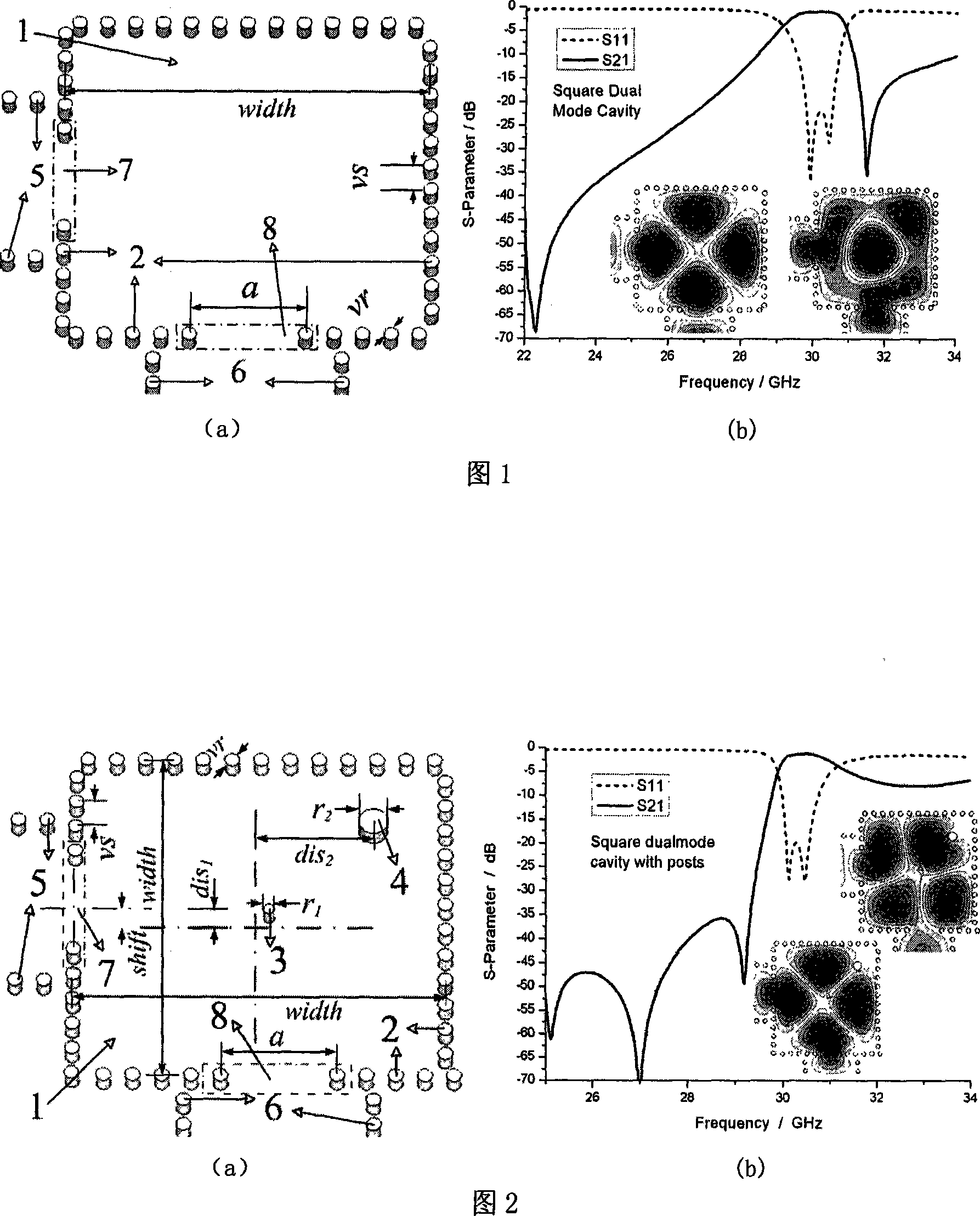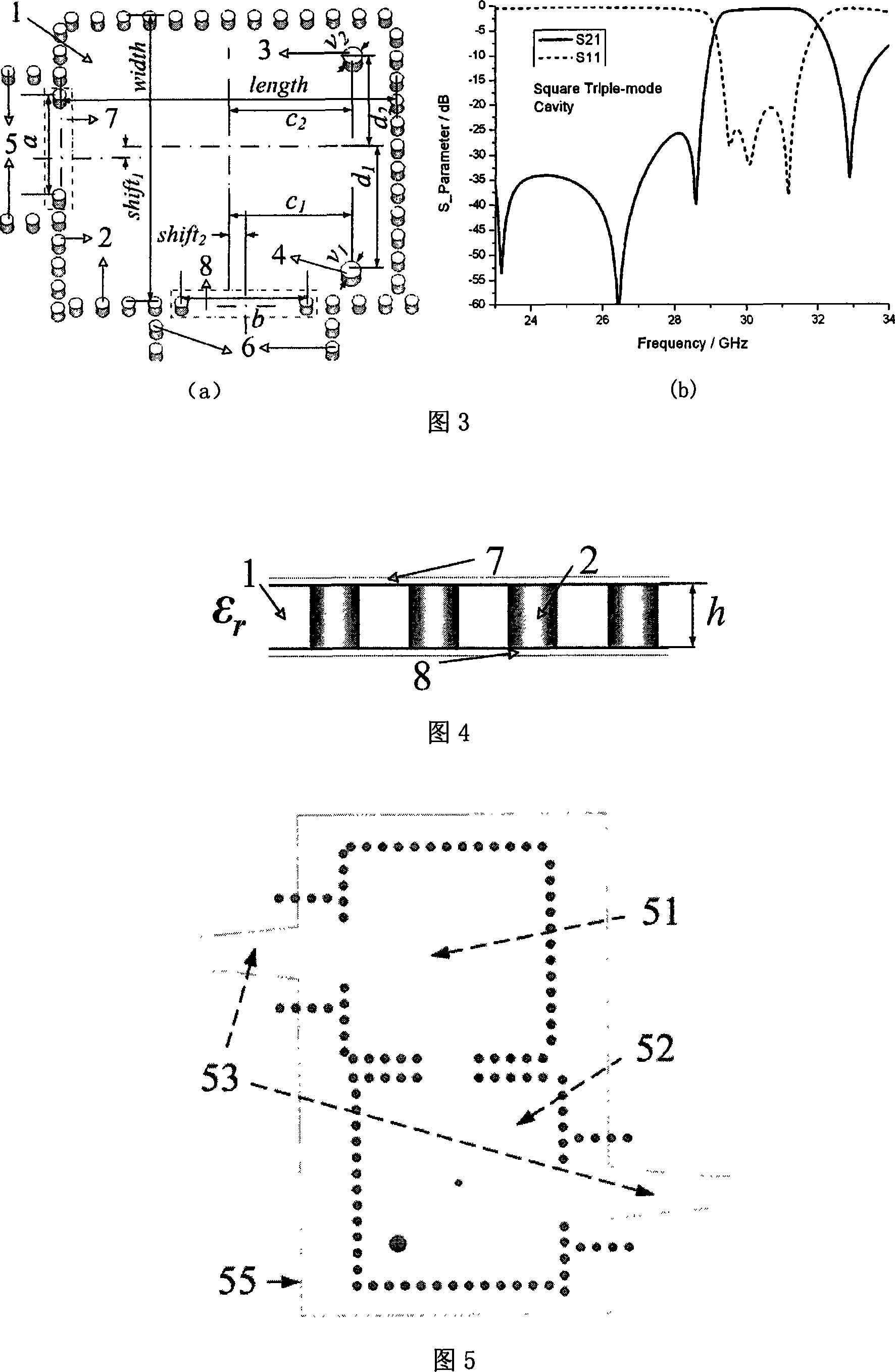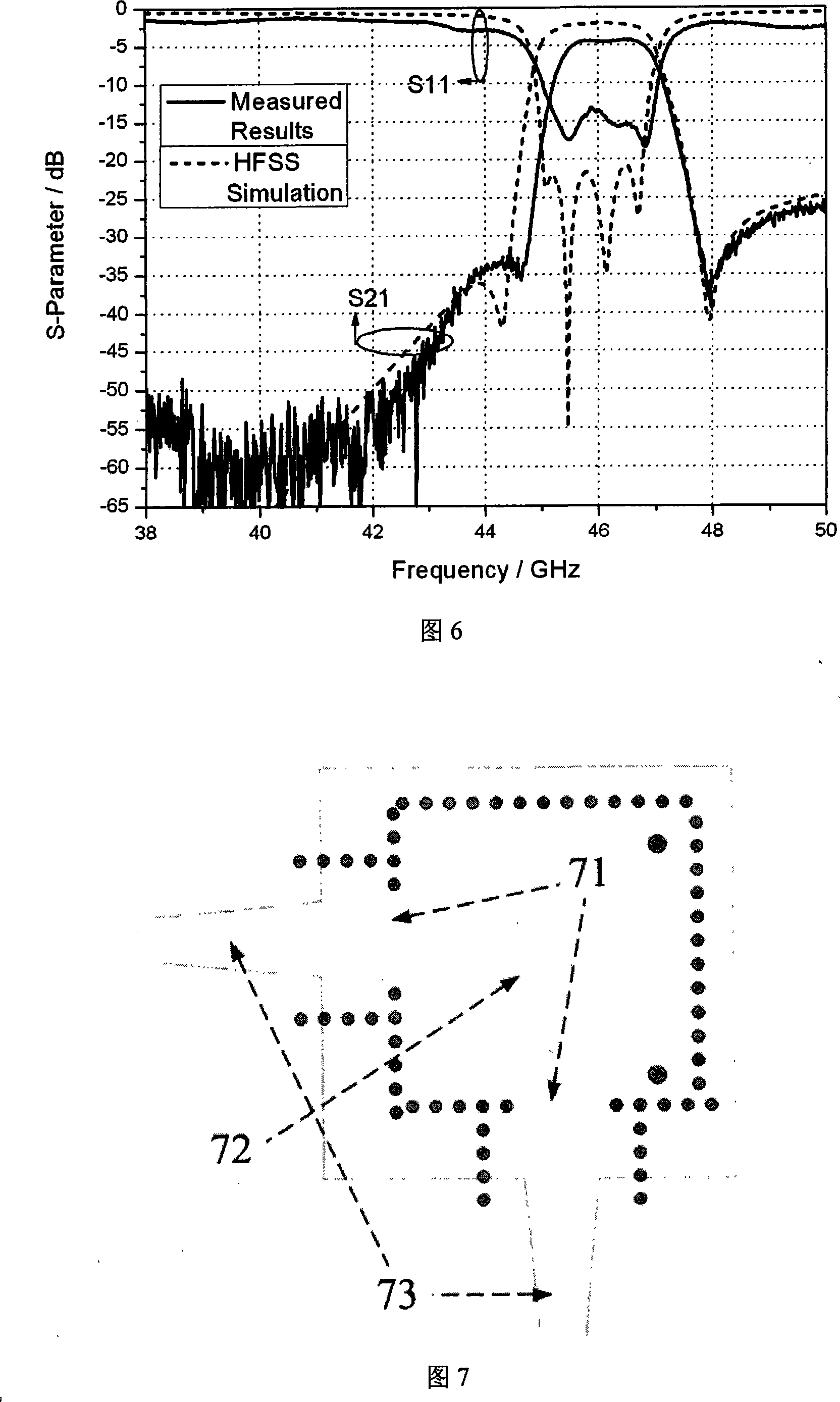A substrate integration waveguide multi-mode filter based on square high order cavity
A substrate-integrated waveguide and filter technology, which is applied in the high-frequency field, can solve the problems of inability to design and process, and the influence of metallized through holes is too large, and achieve the effect of improving acceptable tolerances.
- Summary
- Abstract
- Description
- Claims
- Application Information
AI Technical Summary
Problems solved by technology
Method used
Image
Examples
Embodiment 1
[0022] Embodiment 1 Q-band filter based on two square SIW dual-mode cavities
[0023] The physical structure of the filter design is shown in Figure 5. The dual-mode cavity 51 shown in FIG. 1 , the dual-mode cavity 52 shown in FIG. 2 , the microstrip feeder and its gradient line 53 for testing, and the metal copper 55 on the dielectric substrate. The size of a single substrate integrated waveguide dual-mode cavity is less than 7mm×7mm. The whole filter is composed of two different square dual-mode cavities folded, which is very small and compact. The substrate is made of Rogers5880 material with a dielectric constant of 2.2. The thickness is 0.254mm, and if a substrate with a higher dielectric constant is used, the cavity size will be further reduced. The measured transmission characteristics of the filter are shown by the solid line in Figure 6. The measured loss is about 4.38dB. This loss includes the loss caused by the test connector, microstrip feeder line and gradient li...
Embodiment 2
[0024] Embodiment 2 Q-band single-cavity three-mode filter
[0025] In order to verify the characteristics of the three-mode filter, a three-mode filter with a single square cavity is designed and realized, and the structure is shown in Figure 7. The input-output inductive window coupling 71, the three-mode cavity 72 shown in FIG. 3, the input-output microstrip feed and its gradient line 73 for testing. The cavity size is about 7mm×7mm, and the substrate is still made of Rogers5880 material with a thickness of 0.254mm and a dielectric constant of 2.2. In order to facilitate testing, the microstrip feeder is deflected at 90 degrees, and the entire three-mode cavity is realized by metal through holes, and the processing is very simple. The simulation and test response of the filter are shown in Figure 8. The test insertion loss of the filter is about 2.48dB, which has included the influence of the microstrip feeder and the test connector. The actual filter loss is about 1.1dB. T...
Embodiment 3
[0026] Embodiment 3 Q-band filter based on square three-mode cavity and circular dual-mode cavity
[0027] In Embodiment 3, a square three-mode cavity is applied to a two-cavity filter, and better performance is expected to be obtained. The physical structure of the filter is shown in Figure 9. The microstrip feed and gradient line 91 used for testing, the three-mode cavity 92 shown in FIG. 3 , and a circular dual-mode cavity 93 . The circular dual-mode cavity has a larger passband bandwidth and better upper sideband. The substrate used in the filter is Rogers5880 material with a thickness of 0.254mm and a dielectric constant of 2.2. Filters include microstrip and tapered lines, 50 ohm microstrip lines for testing, tapered lines for impedance matching, and a circular cavity and a square trimode cavity. The test results are shown in Figure 9. The filter test insertion loss is about 3.2dB. If the influence of connectors and microstrips is removed, the actual loss should be ab...
PUM
| Property | Measurement | Unit |
|---|---|---|
| Diameter | aaaaa | aaaaa |
Abstract
Description
Claims
Application Information
 Login to View More
Login to View More - R&D
- Intellectual Property
- Life Sciences
- Materials
- Tech Scout
- Unparalleled Data Quality
- Higher Quality Content
- 60% Fewer Hallucinations
Browse by: Latest US Patents, China's latest patents, Technical Efficacy Thesaurus, Application Domain, Technology Topic, Popular Technical Reports.
© 2025 PatSnap. All rights reserved.Legal|Privacy policy|Modern Slavery Act Transparency Statement|Sitemap|About US| Contact US: help@patsnap.com



